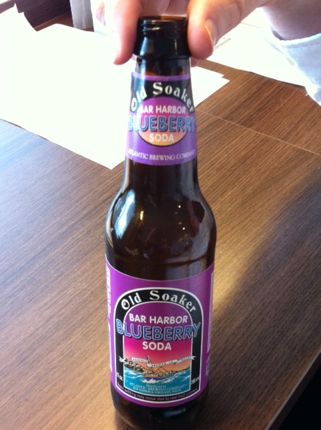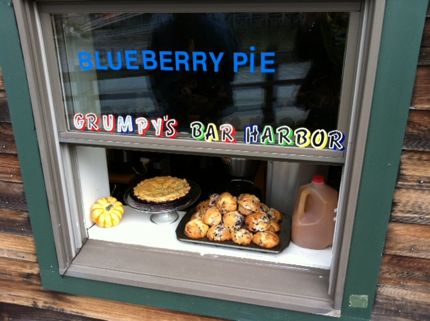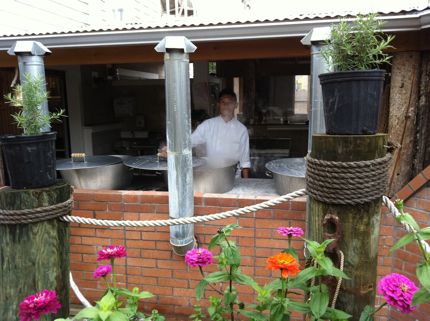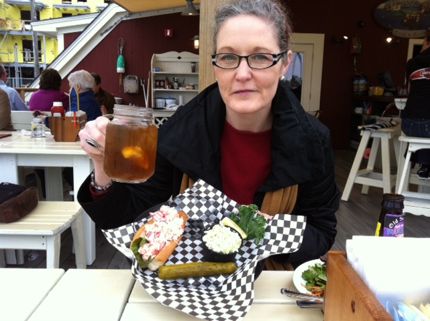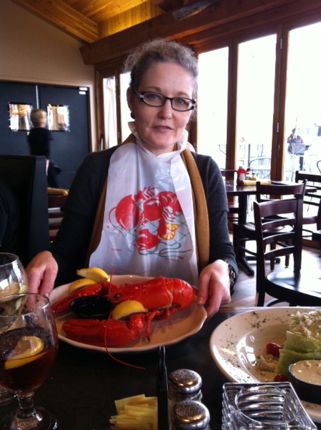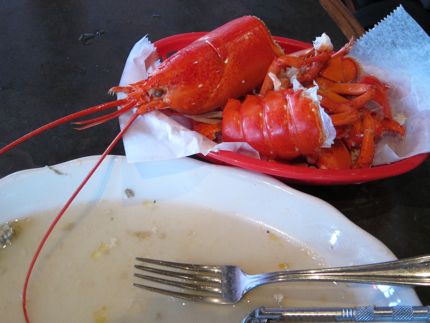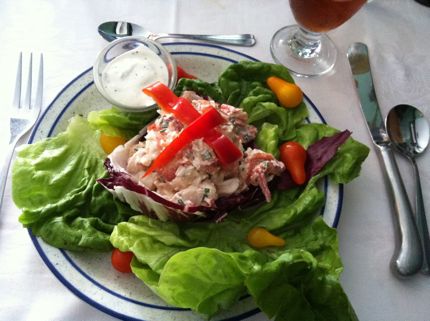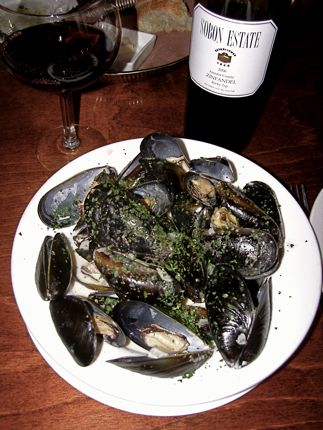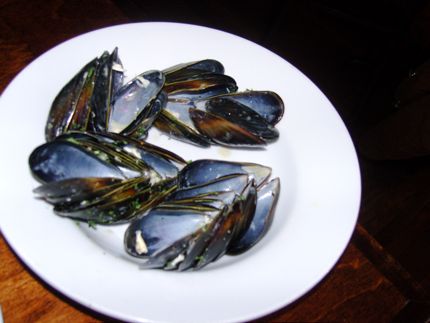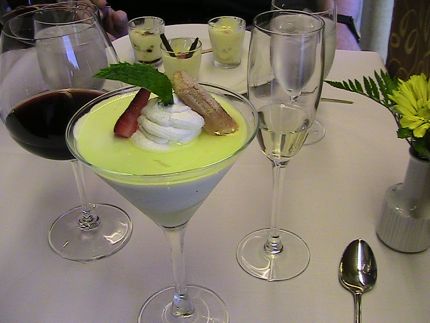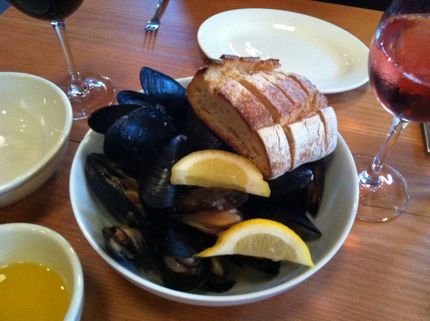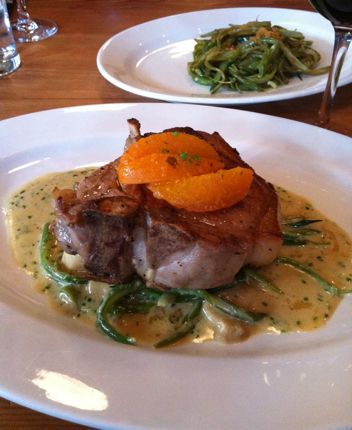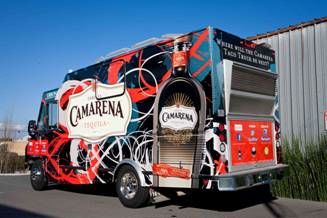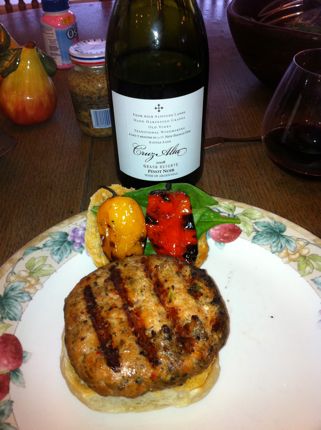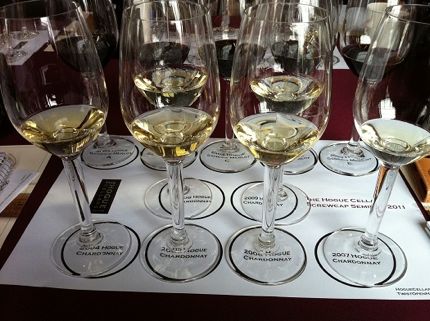Blushing Blueberries and Lotsa “Lobsta” in Bar Harbor, Maine
November 15, 2011
One of my favorite things to do when we are traveling far and wide is to sample the local specialty foods and drink.
And during the third port call of our Fall Foliage cruise this fall, we did just that in the northern Maine town of Bar Harbor.
The weather was gray and damp/cold, just the way we like it. I don’t think I have ever seen so many moose- and blueberry-themed items in my life at all the little souvenir shops scattered throughout the town.
The fact that four other big cruise ships were in port the same day as us didn’t help. We felt overrun by fellow cruisers!
Our first encounter with local cuisine was of the beverage variety. We enjoyed sipping and sharing a bottle of Old Soaker Bar Harbor Blueberry Soda.
The soda wasn’t too sweet and tasted of natural, not synthetic fruit. Spencer said it reminded him of the Grapette sodas he enjoyed as a child.
We bought our bottle of pop at the oldest continuously operating grocery store in Bar Harbor.
With 110 years under its belt, J. H. Butterfield Co., purveyor of fancy food, wine, and beer, was located at 152 Main Street.
In addition to blueberry soda, the venerable store featured all sorts of ale, wine, turnovers, muffins, maple products, and local and imported cheeses. We enjoyed sampling the big wedge of Grafton Village Cheese Extra-Sharp Cheddar Cheese and even back to the boat with a small wedge for late-night nibbling.
Located on the ferry dock in Bar Harbor, Grumpy’s Bakery’s window tempted with other local specialties–freshly baked blueberry pie and muffins and apple cider.
But after a couple hours of sightseeing and shopping, we wanted something more substantial, so headed over to the wildly popular (lines out the door) Stewman’s Lobster Pound at 123 Eden Street and 35 West Streeet.
There I discovered that a lobster pound is “a place where live lobsters are cooked outdoors in wood-fired lobster pots. The centerpiece of any shore dinner, a freshly steamed lobster is beyond perfection accompanied by clams, mussels, corn on the cob, and a baked potato.”
And the restaurant is justly proud since President Obama ate there last summer.
We’d been eating a lot (this, after all, was a cruise!), so I opted instead for an authentic Lobster Roll–lobster salad on a toasted brioche-style bun with cole slaw and a pickle.
Frankly, I found this New England delicacy kind of underwhelming. I did much better the day before in Gloucester, Massachusetts, with with my steamed “lobsta.”
But Spencer gave me bites of his Fish ‘n Chips platter so I didn’t starve. And we felt very sanctimonious when we passed up a slice of good-looking blueberry pie à la mode for dessert.

